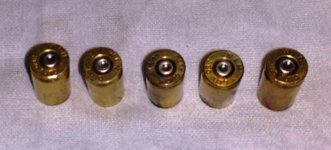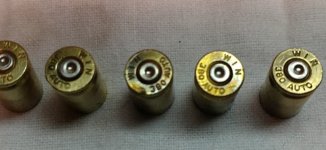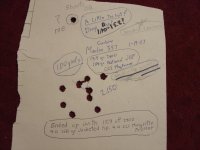Alk8944
US Veteran
One recurring thread theme is use of Small Rifle Primers in pistol and revolver cartridges. Invariably there are several who opine that this will not work because rifle primers are thicker, harder, etc. and will invariably give high rates of failures to fire because everyone knows that handguns don't have the hammer/striker energy to fire them reliably. BS!
For many years I have used SRP in some cartridges as a matter of course with no issues. I have chronographed hundreds of rounds of ammunition loaded identically except for use of SP, SPM and SRP, with the result being that there is no more variation in velocity that would be normally experienced with succeeding batches of ammunition. There is virtually no difference in performance!
Just out of curiosity tonight I loaded a few primed cases with CCI Small Rifle Primers in .380 brass just to confirm whether or not you could get reliable ignition in a striker fired .380 with SRP. In this case fired in a Belgian Browning Pocket. 5 rounds were fired and the primers are shown below. Do any of you honestly believe that the firing pin impression in any of these is marginal in the least way? I am looking for those who have real-life personal experience doing this, not stories of what you have heard, read, believe without evidence, etc.
Here are the pictures:
For many years I have used SRP in some cartridges as a matter of course with no issues. I have chronographed hundreds of rounds of ammunition loaded identically except for use of SP, SPM and SRP, with the result being that there is no more variation in velocity that would be normally experienced with succeeding batches of ammunition. There is virtually no difference in performance!
Just out of curiosity tonight I loaded a few primed cases with CCI Small Rifle Primers in .380 brass just to confirm whether or not you could get reliable ignition in a striker fired .380 with SRP. In this case fired in a Belgian Browning Pocket. 5 rounds were fired and the primers are shown below. Do any of you honestly believe that the firing pin impression in any of these is marginal in the least way? I am looking for those who have real-life personal experience doing this, not stories of what you have heard, read, believe without evidence, etc.
Here are the pictures:
Attachments
Last edited:



